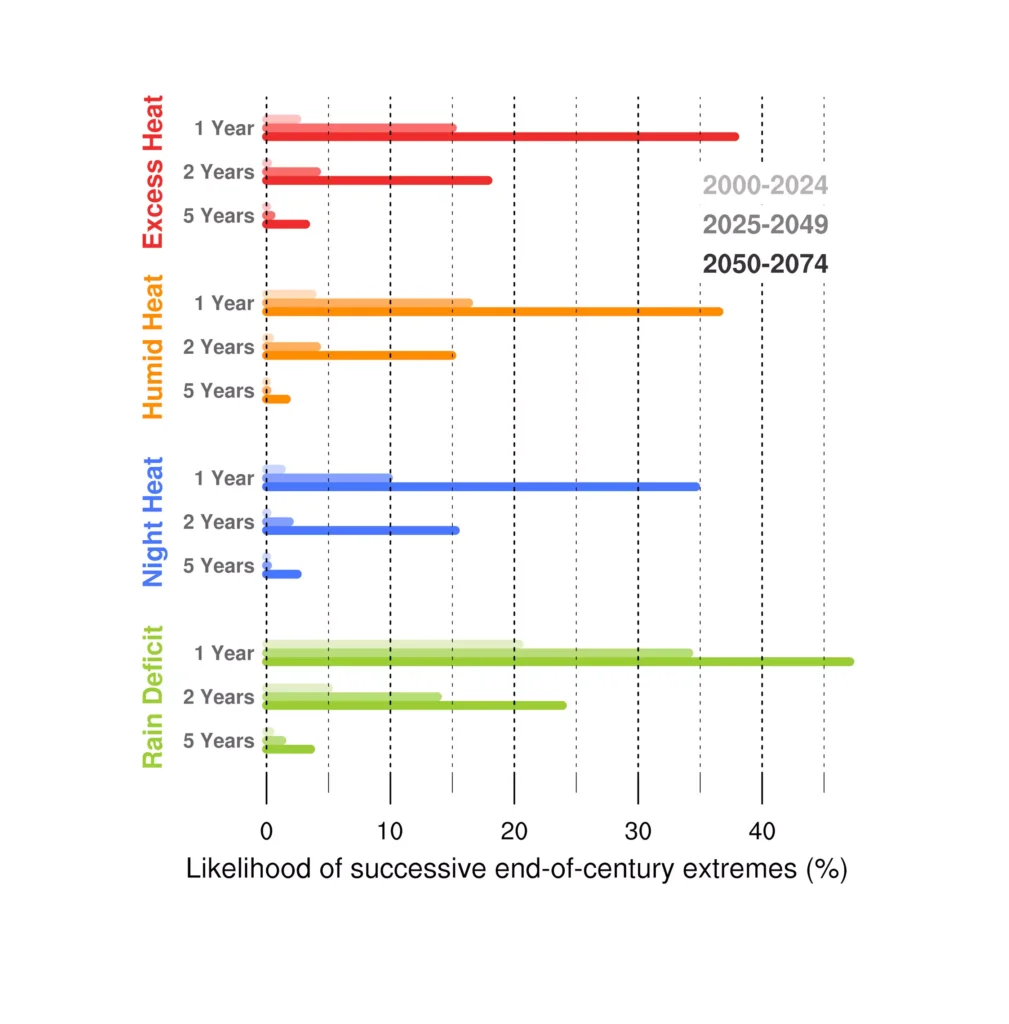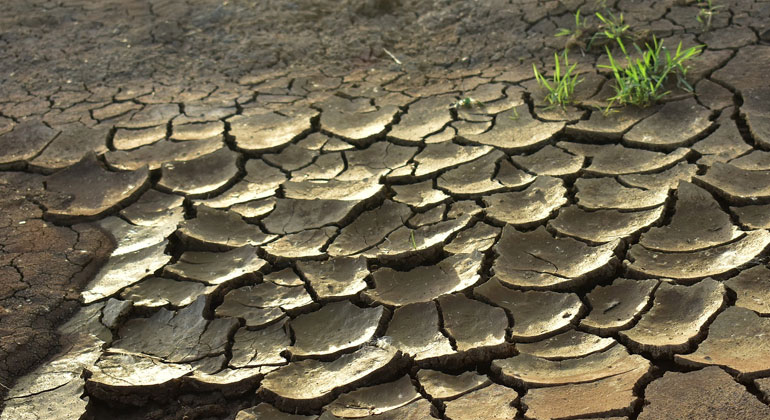End-of-century levels of extreme heat and drought are approaching Europe swiftly
Extreme heat and drought typical of an end-of-century climate could soon occur over Europe, and it could do so repeatedly.
Laura Suarez-Gutierrez, MSCA Fellow at ETHZ and formerly at Max Planck Institute for Meteorology (MPI-M), in collaboration with MPI-M scientists Wolfgang Müller and Jochem Marotzke, show that single and compound heat and drought stress typical of an end-of-century climate could occur over Europe within the next two decades, and that it could occur again in consecutive years. The authors also show that multi-year heat extremes are connected to one of the most predictable components of the climate system: the multidecadal variability of the north Atlantic.

Despite the European climate being prone to successive multi-year extremes due to the influence of the North Atlantic multidecadal variability, there is a lack of understanding on the likelihood of such successive extremes changes under warming, how soon they could happen, and how they are affected by internal climate variability. Using a hundred simulations from an Earth system model, the MPI Grand Ensemble, the authors assess how heat and drought accumulates year after year to produce the most extreme decades, and how soon such heat- and drought- loaded decades could bring a taste of the end-of-century reality to Europe.
Their findings show that, even under moderate warming, end-of-century heat and drought levels that were virtually impossible just 20 years ago reach 1-in-10 likelihoods in the next two decades. By 2050, there is a 1-in-10 chance of experiencing extreme end-of-century heat stress for two consecutive years in a row, something unprecedented to date in the observational record. Furthermore, 5-year long European-scale mega-droughts become by then plausible.
But not only are heat and drought extremes becoming more prevalent, the range of heat and drought that we may come to experience under the same global warming level is also growing wider by the decade. This range will increase to the point where experiencing heat- and drought-loaded decades typical of an end-of-century climate could become a reality in Europe as early as 2040. And this is indeed highly affected by the state of the North Atlantic: as early as in 2030 and under a concurrent warmer-than-normal North Atlantic Ocean, exceeding end-of-century-typical levels of single and compound heat and drought stress will be twice as likely.
The findings by Suarez-Gutierrez and colleagues show that for heat-stress metrics such as maximum daily temperatures or nighttime heat persistence, the best-case outcome for the 2040s is in the range of the levels we have experienced in 2010-2019, the warmest decade on record over Europe. For that same time period, the worst-case outcome exceeds typical end-of-century average extreme heat and drought by a wide margin.
These results link decades-long literature on how North Atlantic variability influences the mean state of the European climate system with novel extreme-event research that captures event intensity and persistency over single seasons as well as impact-relevant compounding and cascading effects brought by compound and successive extremes.
This research was carried out within the BMBF-funded ClimXtreme project and co-funded by the European Union’s Horizon Europe Framework Programme under the Marie Skłodowska-Curie Actions.
- Suarez-Gutierrez, L., Müller, W. A., & Marotzke, J. (2023) Extreme heat and drought typical of an end-of-century climate could occur over Europe soon and repeatedly. Communications Earth & Environment. DOI: 10.1038/s43247-023-01075-y








